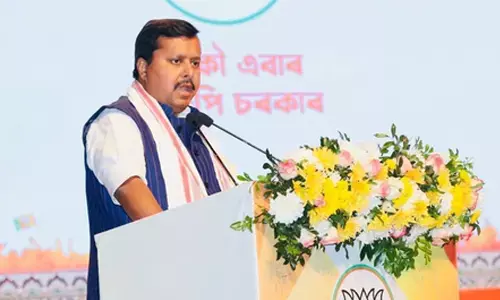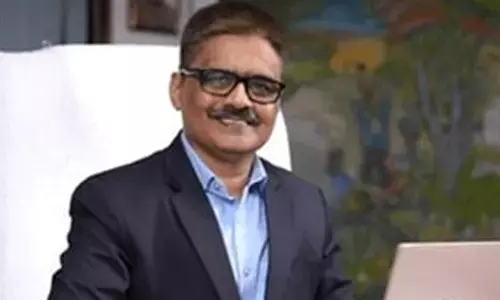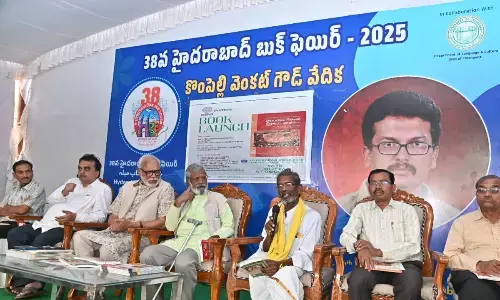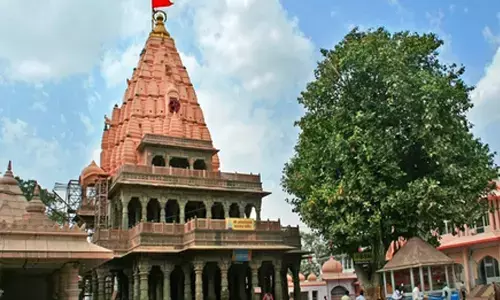Understanding blockchain technology for India’s digital future
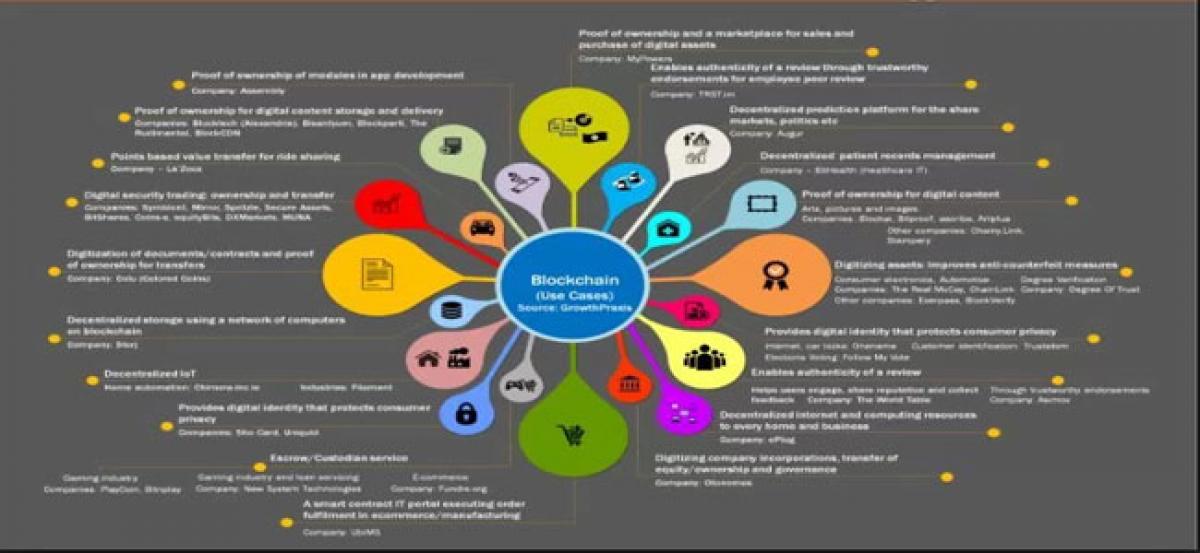
Blockchain has been a buzzword for some time now. In addition to private companies and banks, blockchain has attracted interest from within the government as well.
Blockchain has been a buzzword for some time now. In addition to private companies and banks, blockchain has attracted interest from within the government as well.
With countries like China and India trying to regulate the sale of bitcoins and their issuance through blockchain, more people including netizens seem to have become interested in the technology. However, not many including bankers are aware of the technology and their implications on the society. The technology is very new and is still underfunded.
What are Blockchains?
- Blockchains are a new data structure that is secure, cryptography-based, and distributed across a network. The technology supports cryptocurrencies such as Bitcoin, and the transfer of any data or digital asset.
- Spearheaded by Bitcoin, blockchains achieve consensus among distributed nodes, allowing the transfer of digital goods without the need for centralized authorisation of transactions. The present blockchain ecosystem is like the early Internet, a permissionless innovation environment in which email, the World Wide Web, Napster, Skype, and Uber were built.
How this operates?
- The technology allows transactions to be simultaneously anonymous and secure, peer-to-peer, instant and frictionless. It does this by distributing trust from powerful intermediaries to a large global network, which through mass collaboration, clever code and cryptography, enables a tamper-proof public ledger of every transaction that’s ever happened on the network.
- A block is the “current” part of a blockchain which records some or all of the recent transactions, and once completed, goes into the blockchain as permanent database. Each time a block gets completed, a new block is generated. Blocks are linked to each other (like a chain) in proper linear, chronological order with every block containing a hash of the previous block.
How is it different from current systems?
- Blockchain technology allows for instant recognition of the exact size of the block by all transacting parties in the chain since the block is simultaneously updated on all their databases, and has unique security features that do not allow tampering with the definition of the block.
- In addition, each block’s movements across the chain have the ability to be verified by all parties in the chain since the block carries with it the digital imprint, or ‘signature’, of wherever it has been.
- Therefore, it creates instant trust without having to rely on a series of trustworthy banks to clear cheques. Here, various parties transacting regard their reputation as being more important than reneging on it. Unlike traditional banking system, cash transactions here are undertaken immediately.
Why are banks interested?
- All major banks are experimenting with blockchain as they can use it for money transfers, record keeping and other back-end functions.
- The blockchain application replicates the paper-intensive international trade finance process as an electronic decentralised ledger, that gives all the participating entities, including banks, the ability to access a single source of information.
- It also enables them to track documentation and authenticate ownership of assets digitally, as an un-alterable ledger in real time.
- Indian IT service providers like Infosys and TCS have been throwing their weight around blockchain technology. Both these companies are using blockchain mechanism to create core banking platforms for banks.
Huge Potential
- Banks tend to invest a lot of time in moving money, thus creating a problem, whereas the blockchain technology can free up the movement of money, instead of leaving it clogged in slow banking.
- It’s very secure and till now no blockchain technology has never been hacked successfully.
- Transaction process will also become easy by this technology and in the same way, tracking also will become easy. It will play a crucial role particularly with bonds and stocks as banks spend a lot of money and time on tracking it.
Where can it be used?
- Use of blockchain technology is not limited to the financial sector. It is being used in many other areas. For example, Honduras government has put all land records on a public ledger – the blockchain. The minute there is a change in ownership, it gets recorded publicly.
- The Australian Securities Exchange (ASX) announced this year that it would move Australia’s equities clearing and settlement system on to blockchain
- In October 2015, Nasdaq unveiled Linq, a solution enabling private companies to digitally represent share ownership using blockchain-based technology.
Is it safe?
- The USP of blockchain is that it allows two parties to execute a transaction without any intermediary. Blockchain allows financial institutions to execute and verify transactions discretely without any human intervention.
- The electronic ledger of transactions is continuously maintained and verified in ‘blocks’ of records. With the help of cryptography, the tamper-proof ledger is shared between parties on computer servers.
- Experts believe that blockchain architecture can significantly bring down the costs and reduce inefficiencies in the financial sector.
Benefits of blockchain technology
- As a public ledger system, blockchain records and validate each and every transaction made, which makes it secure and reliable.
- All the transactions made are authorized by miners, which makes the transactions immutable and prevent it from the threat of hacking.
- Blockchain technology discards the need of any third-party or central authority for peer-to-peer transactions.
- It allows decentralization of the technology.
How blockchain can be used in public administration?
- Blockchain has the potential to optimize the delivery of public services, further India’s fight against corruption, and create considerable value for its citizens.
- By maintaining an immutable and chronologically ordered record of all actions and files (“blocks”) linked together (“chain”) in a distributed and decentralized database, Blockchain creates an efficient and cost-effective database that is virtually tamper-proof. By doing so, blockchain promises to create more transparent, accountable, and efficient governments.
- In addition to creating a more efficient government, blockchain can also help create a more honest government. A public blockchain, like the one Bitcoin uses, records all information and transactions on the decentralized database permanently, publicly, and most importantly, securely. By allowing governments to track the movement of government funds, blockchain can hold state and local actors accountable for any misappropriations.
- Blockchain not only deters corruption through accountability, but it can also do so by bypassing the middleman entirely. Earlier this year, the World Food Programme began testing blockchain-based food and cash transactions in Pakistan’s Sindh province. Refugees in Jordan’s Azraq camp are now using the same technology, in conjunction with biometric registration data for authentication, to pay for food.
- With Aadhaar cards becoming nearly ubiquitous in India, adopting blockchain could be the next logical step in India’s pursuit of becoming a digital economy. Blockchain can play an important role in storing individuals’ data, helping conduct secure transactions, maintaining a permanent and private identity record, and turning India into a digital society.
Blockchain for Voting Machines
- Allegations of EVM tampering by political parties have certainly planted seeds of mistrust among the people. Studies allege that EVMs have hardware and software vulnerabilities that can be exploited to commit election malpractices.
- Contemporary and emerging technologies seek to address the core incompetencies in the infrastructure of the voting system through advances in networking and encryption methods. An emerging technology called blockchain is in various stages of implementation across the world for voting and other public services.
Blockchain voting- How it works?
- In blockchain voting, each transaction is similar to a vote and through the use of multiple blockchains along with public key encryption, the voting process is secured while protecting the anonymity of voters.
- The votes can then be randomized more than three times in the digital ballot box so that voters’ identities are not revealed.
- After the polls are closed, a separate blockchain application is created for the counting of votes in the digital ballot box. That blockchain should match the public bulletin board’s blockchain, proving that the online voting system has operated correctly.
- Blockchains are transparent and designed to have a decentralized authority which ensures that control is not in one hand and the process is visible to the public always. Further, the audit trail of the transactions combined with public key encryption solves the issue of auditability.
Examples from across the world
- Some countries are already experimenting with blockchain technology in voting processes and for delivering public services.
- Australia has declared its plan for using blockchain in voting and began projects for prototyping the technology a couple of years ago.
- In 2014, Denmark’s Liberal Alliance political party voted in a blockchain-based system for its internal elections. Such systems have also been adopted in Norway and Spain.
- Malta with a small population of 450,000, is about to embrace blockchain in land registry, voting and other national services.
- In South Korea, a community government used the blockchain platform in a local funding ballot where around 9,000 votes were submitted. The platform made use of smart contracts to facilitate the voting process.
- Blocko, the Korean firm that developed the platform, claims that the technology, developed in-house, helped register data, including voters’ information, voting contents and more, on a blockchain.
Indian context
- In India, given the deep penetration of cellphones and the unique identification (Aadhaar) system, blockchain could be a practical and feasible tool to fight voter fraud and alleviate vote authentication and validation concerns.
- Aadhaar cards and electronic-know your customer (e-KYC) norms are already becoming mainstream. These critical infrastructure components can be leveraged to implement blockchain solutions in voting and public services such as land registrations, public-private contracts and other service level agreements (SLA).
- The technology sector is also responding positively by increasing investments and resources. For instance, around 32 blockchain firms were founded in India in 2016, up from 23 founded before 2016, according to a fintech report by PwC.
- The Reserve Bank of India’s research arm has also developed proof of concepts with a few banks on blockchain, and it said in its white paper that “the results are quite encouraging, giving comfort and confidence in the implementability of blockchain technology”.
- The proactive study and prototyping of emerging technologies creates an encouraging environment for other independent government agencies to venture out and experiment.
Way forward
- Keeping in mind the emerging and potential threats to the current voting system, it is essential to experiment with new technologies that can potentially secure the system.
- Conducting research, building proof of concepts and end-to-end pilots by leveraging the burgeoning activity in blockchain technology can be undertaken by the ECI.
- Given the favourable conditions of improved infrastructure and interest, the time is ripe for the ECI to explore blockchain technology as a future alternative to EVMs.
Challenges with Blockchain
- Initial cost of transitioning to a new unique data storage system.
- Identification of peers and creating hierarchies who can be trusted to access the data.
- Privacy and security challenges that might arise from the decentralised access of data. This may also need to modify the Information Technology Act.
- Probable resistance from the government staff to the new technology and to the shift in to the way in which the state and citizen interacts.
- Developing a regulatory framework in guiding the application of the new technology.
Way forward
- Immediate implementation of blockchain and distributed ledger technology is imperative for the state to bring in efficiency and transparency in the information architecture.
- Though, the technology is in nascent stage of adoption and development it can be used for basic implementation.
- Moreover, the government with adequate resources and capability can significantly aid and guide the innovation’s future trajectory while also benefitting from it.
- Early adoption of this technology will also send right signals about the government’s efforts in promoting transparency and will also prompt the private sector to follow suit.
- Overall it will help in increasing transparency and reducing scams.
What is bitcoin?
- It is an attempt by a firm, using blockchain technology, to create a set of shares in a trading entity that had an initial set value and fixed number (much like the face value and number of shares offered in an initial public offering), in the hope that these shares would become the medium of exchange through which people trade goods and services.
- Since the number of shares is fixed, demand for them goes up over a period of time as more and more people use the shares to settle their transactions; so, the bet is that each bitcoin’s value goes up stratospherically since there will never ever be any more bitcoins issued.
Is it legal?
This is legal since it hasn’t yet been regulated by many countries.
Way ahead
Sovereign governments don’t like allowing companies to issue their own coin and will eventually regulate such systems.
Bitcoin Transactions
Bitcoin transactions are sent from and to electronic bitcoin wallets, and are digitally signed for security. Everyone on the network knows about a transaction, and the history of a transaction can be traced back to the point where the bitcoins were produced.
Advantages of Bitcoins
- Freedom in Payment.
- Allowing users to be in control of their transactions help keep Bitcoin safe for the network.
- With the block chain, all finalized transactions are available for everyone to see, however personal information is hidden.
- Bitcoin protocol cannot be manipulated by any person, organization, or government. This is due to Bitcoin being cryptographically secure.
- Currently there are either no fees, or very low fees within Bitcoin payments.
- Due to the fact that Bitcoin transactions cannot be reversed, do not carry with them personal information, and are secure, merchants are protected from potential losses that might occur from fraud.
Disadvantages
- Lack of Awareness & Understanding.
- Bitcoin has volatility mainly due to the fact that there is a limited amount of coins and the demand for them increases by each passing day.
- Bitcoin is still at its infancy stage with incomplete features that are in development.
Concerns associated with Blockchain
- Blockchain is still a (relatively) new technology and is not without its problems. For a start, there are ongoing concerns about privacy in the settlement and storage of securities – blockchain providers are working hard to address.
- Banks are also at threat with blockchain, since more and more firms (using their IT service providers from India and elsewhere) will build systems that can create and exchange ‘blocks’ with one another completely legally, without ever having to use the banks as a financial intermediary.
Conclusion
- Blockchain, however, is not a panacea. While it can help enhance the delivery of government services, it cannot replace an inefficient system. Although it can deter corruption by making governments more accountable and transparent, it cannot prevent the entering of false information into the network.
- Yet, it presents the government with a powerful opportunity. By embracing blockchain, it can create a bureaucracy
- that focuses on innovation and experimentation, a government that seeks to maximize efficiency and governance, and an economy sustained on the promise of technology.
- Blockchain’s applications in the public sphere, however, have yet to catch the eye of the Indian government. This is baffling; the technology is not only promising, but has even begun to be utilized by governments globally.
BY Gudipati Rajendera Kumar








